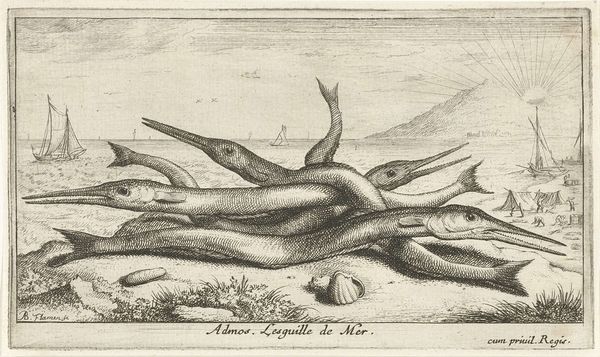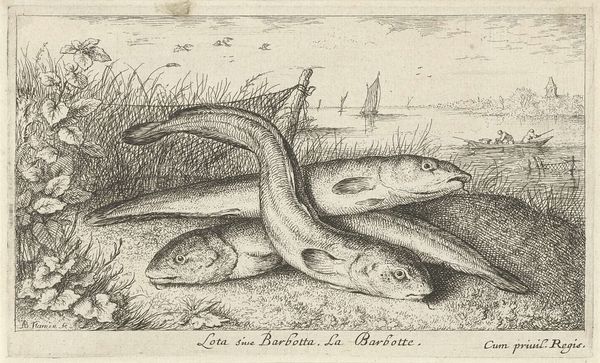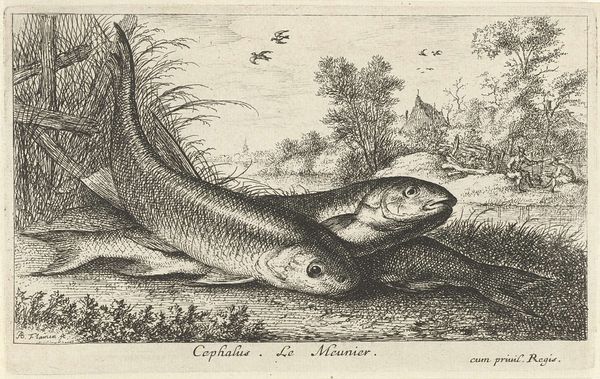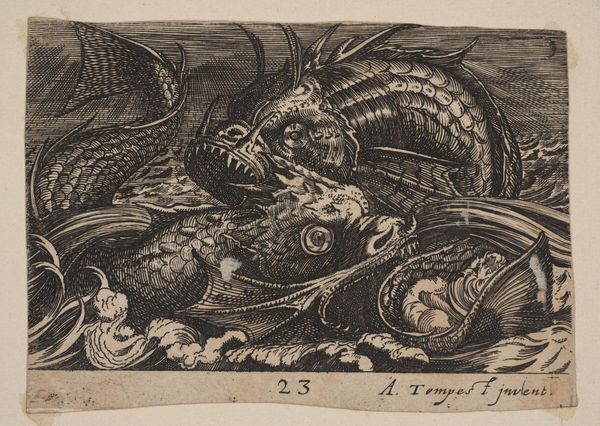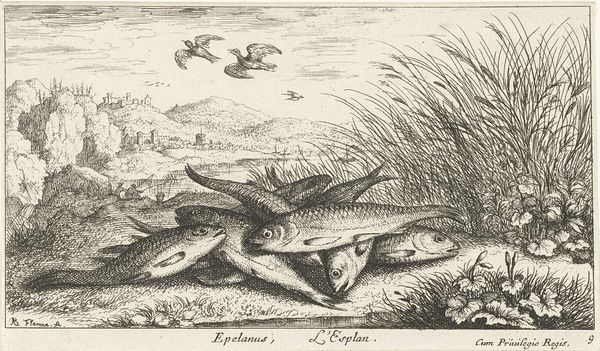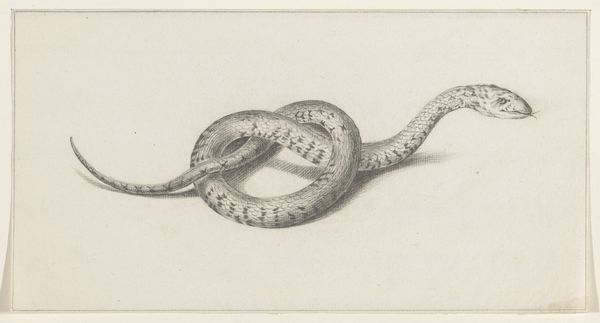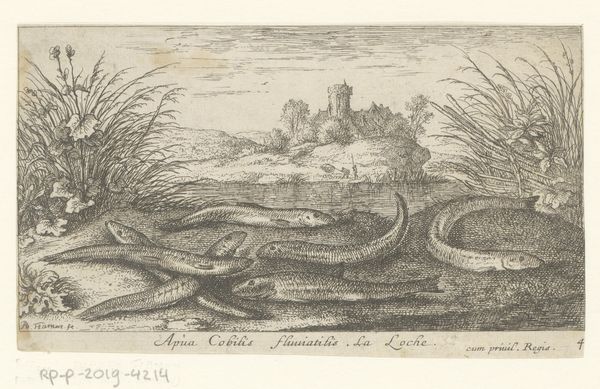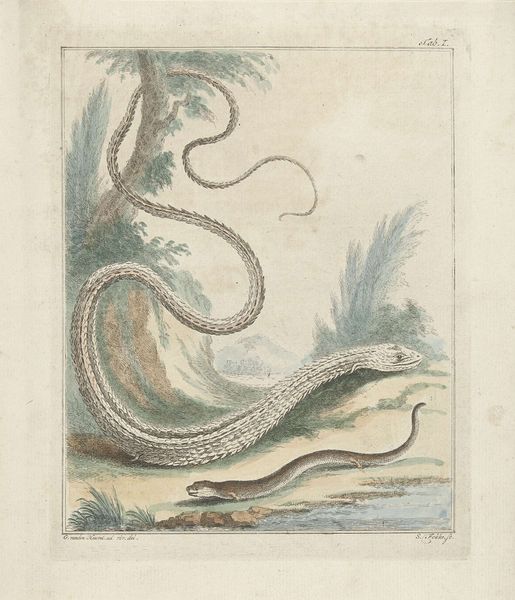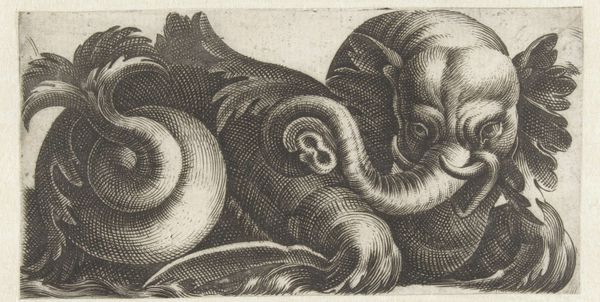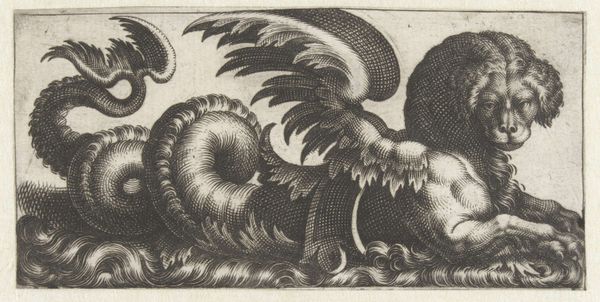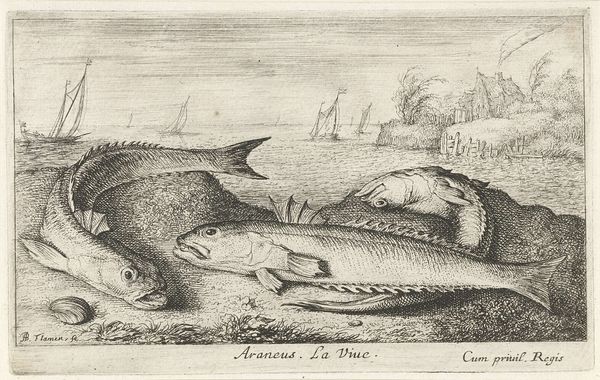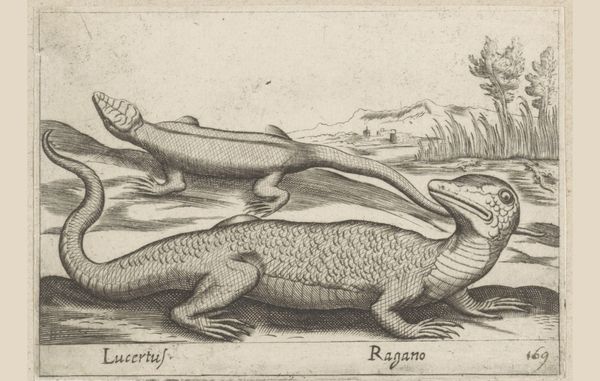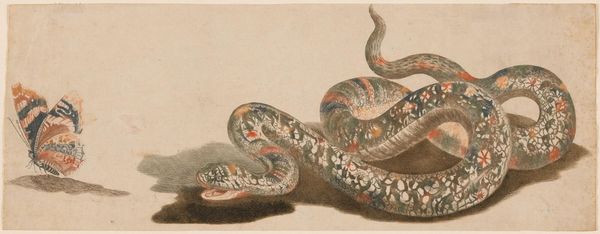
print, etching, engraving
baroque
animal
dutch-golden-age
pen illustration
etching
old engraving style
pen-ink sketch
engraving
Dimensions: height 102 mm, width 175 mm
Copyright: Rijks Museum: Open Domain
Editor: Here we have Albert Flamen’s “Three Eels in the Grass,” an etching from 1664. It's… unexpectedly captivating. The texture he achieves with just lines is incredible. I am curious: What do you see in this piece? Curator: It is certainly intriguing, wouldn’t you agree? First, observe how Flamen structures the composition. The eels form a complex, almost baroque, intertwining mass. The contrasting directions of their bodies, juxtaposed with the verticality of the grass, create visual interest, providing the artwork with balance and rhythm. Note how the detailed execution creates a tension between scientific observation and aesthetic representation. What do you observe regarding light and shadow? Editor: It looks like the texture of the eel skin is brought out through tiny lines, really detailed, but not hyperrealistic? It's like, he chose detail where it mattered most to define the form. Curator: Precisely. The emphasis isn’t on illusionistic depth, but rather on the interplay of lines. Light serves to articulate form, but does not describe atmosphere as such. Do you think it succeeds? Editor: I think so! The simplicity, combined with that careful linework, is really effective. There's almost something modern about it. I suppose I didn’t expect so much complexity in such a small scene. Curator: Indeed, there is a sophistication to it that rewards closer examination. We begin with a simple representation of common river-dwellers. We end with a work reflecting a deep artistic analysis.
Comments
No comments
Be the first to comment and join the conversation on the ultimate creative platform.
